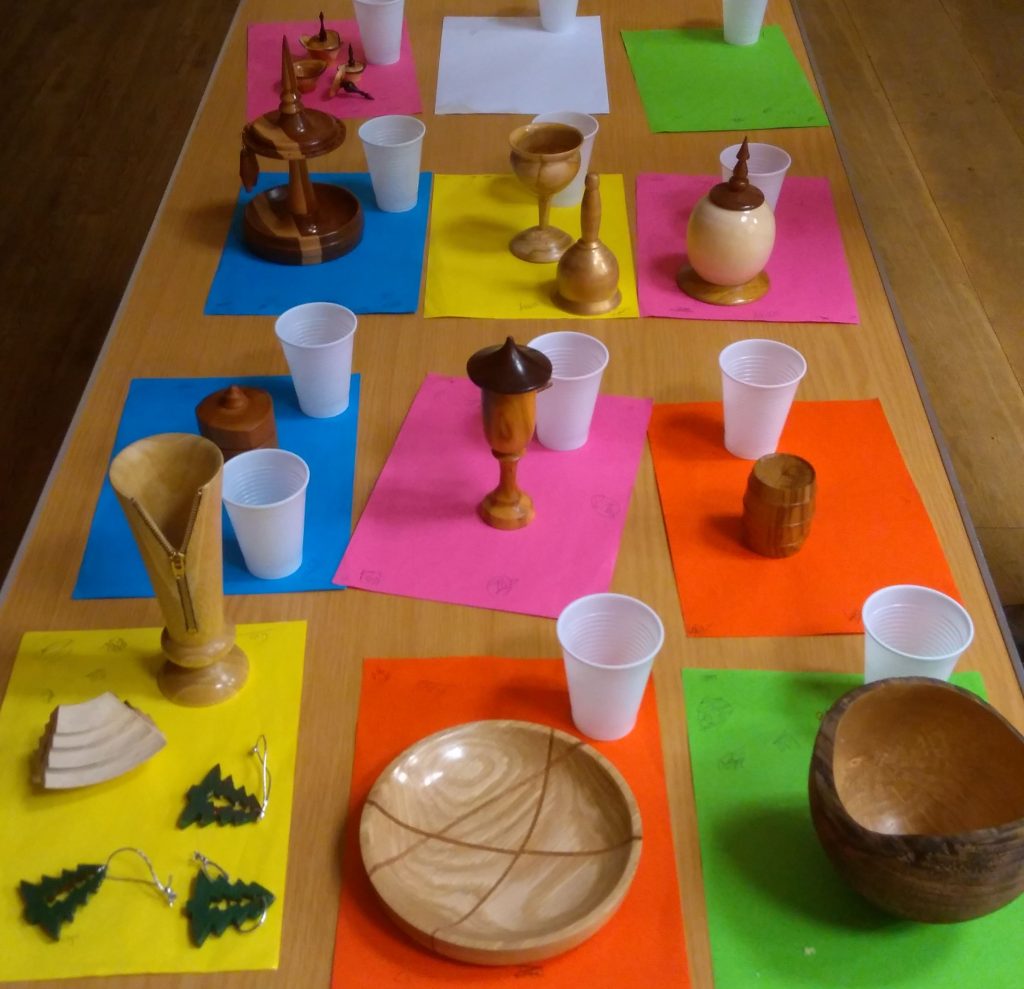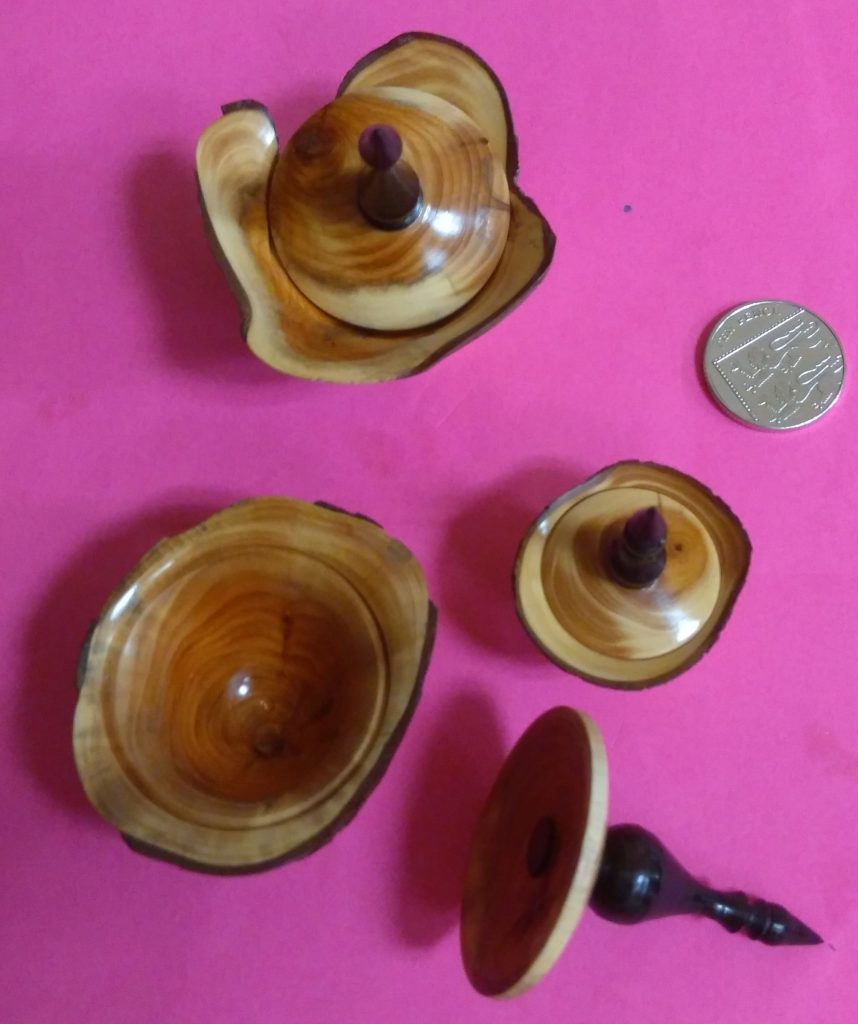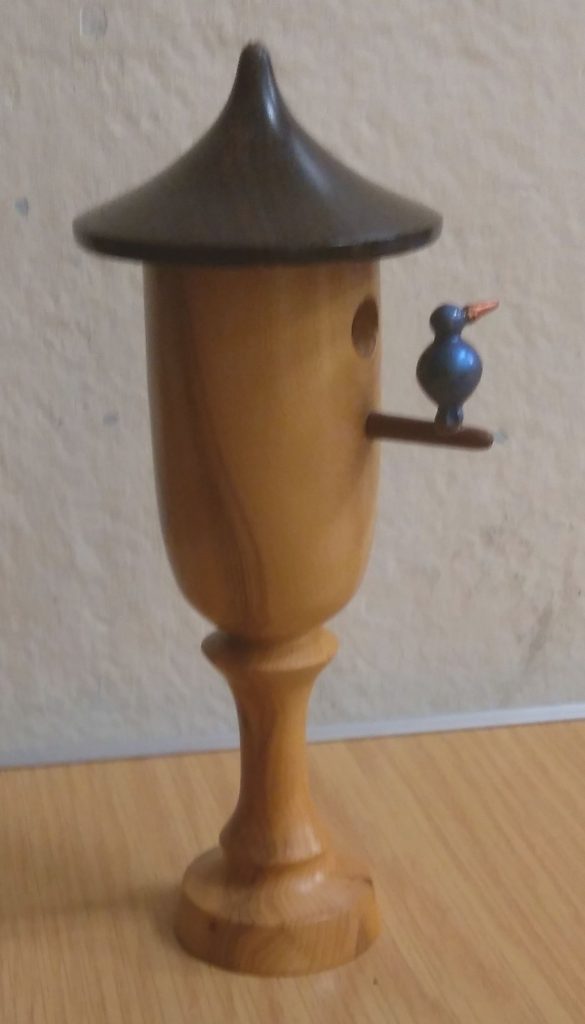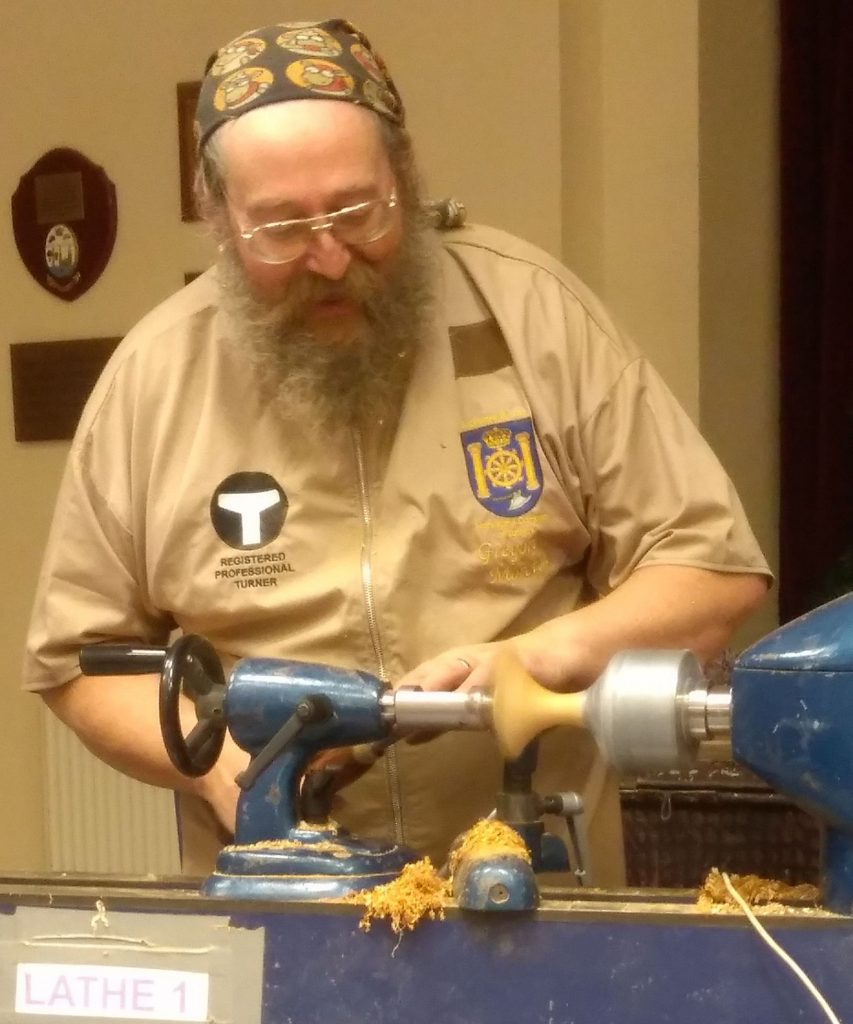This was the first meeting of the month so we had both a competition and a demonstration, details below.
Competition


1st Three delightful lidded yew pots by Mick. Well deserved.

2nd A zipper vase and some ring turned hollow Christmas trees by Geoff Warr helped him to 2nd place, the latter items based upon Richard Wright’s demo at the last meeting. See the picture of the competition table, above, for the zipper vase.

3rd A nice little bird box by Tony – his first entry into the charts I believe. Congratulations!
Demonstration by Gregory Moreton
A NE bowl made out of robinia pseudoacacia burr (false acacia) was demonstrated by Greg for the first part of the evening. He commenced by removing as much bark as possible to prevent it flying off whilst turning.
The blank was mounted between centres, oriented to provide a fairly even top rim and therefore a reasonably even top rim thickness – something to look out for when turning NE bowls.
A bowl gouge was used to shape the outside and a chucking tenon was cut with a spindle gouge (less tearout than a skew chisel). In the restricted space available, Greg took care to keep the gouge steady.
Once satisfied with the shape, he power sanded it through the grits, finishing with 320 grit before reverse mounting it onto the chuck and hollowing out.
Throughout the demo, there were plenty of little asides and comments as to why Greg did things in a particular manner – useful tips, e.g. when hollowing, if the form is deeper than it is wide, a 45° bevel won’t go round the bottom; use a 55-65° bevel, with a relief bevel to avoid too much rubbing.
Leaving a step in the centre of the bowl makes the final cut easier to engage cleanly when starting with the 65° gouge. Sharpen before the final cut, to get the best possible finish off the tools.
Even wall thickness is important as the edge is heavily indented meaning that the rim is visible well down the sides of the bowl and it will look odd if noticeably thicker or thinner than other parts of the edge.
Notwithstanding the above, as this bowl will be made without a foot, it was left thicker at the base to add weight and stop it rolling over.
Following this, Greg power sanded most of the inside of the bowl with the lathe stationary (lots of sharp edges!) and then finished off the bottom by power sanding with the lathe rotating.
The last scraps of bark were removed from the natural edge with a wire brush and then finally cleaned up with a nylon brush in a drill.
The bowl was reversed again, this time onto a foam jam chuck, held in place by a live centre with a washer placed on the point to avoid splitting the spigot – a home-made ring centre in effect. The tenon was removed initially with a bowl gouge, changing to a spindle gouge for the final cuts. The final cut left a scored line to enable breaking off the remainder cleanly.
Although not done for the demo, he usually finishes off with around three coats of finishing oil, allowing 24 hours between coats, rubbing back lightly with Webrax between the coats.
After the raffle draw and a welcome tea break, Greg demonstrated making one of his signature yew forms.
Yew Tube. A piece of yew branch cut diagonally across the ends was mounted eccentrically between a 19mm augur in the headstock and a live ring centre in the tailstock. The eccentricity is to make the most of the yew figuring.
With the lathe turning slowly, the tailstock was used to press the wood onto the augur thereby boring a hole throughout it’s full length, stopping just short of contact between the augur tip and the live centre.
Next, a ready-made wooden arbour was mounted in the chuck and the tube mounted upon it with the tailstock brought up as support while the outside of the tube was shaped and brought down to about 1.5mm wall thickness in the centre.
The ends were faced off and the tailstock end hollowed out, leaving a tenon.
He removed the tailstock and parted through to the arbor at the headstock end before reversing the workpiece onto the chuck and tidying up the end with a spindle gouge so that both ends matched.
The spigot was removed by cutting towards the centre drilling.

Greg reversed the tube once more, onto a jam chuck. He brought up the tailstock and then used duct tape around the chuck and workpiece for additional security.
Finally, he tidied up the end and used the tailstock for support whilst cutting through to the drilled hole to release the completed item.
The final stage would be to sand and finish the Yew Tube but we had run out of time and so Greg finished the demonstration at that point.

